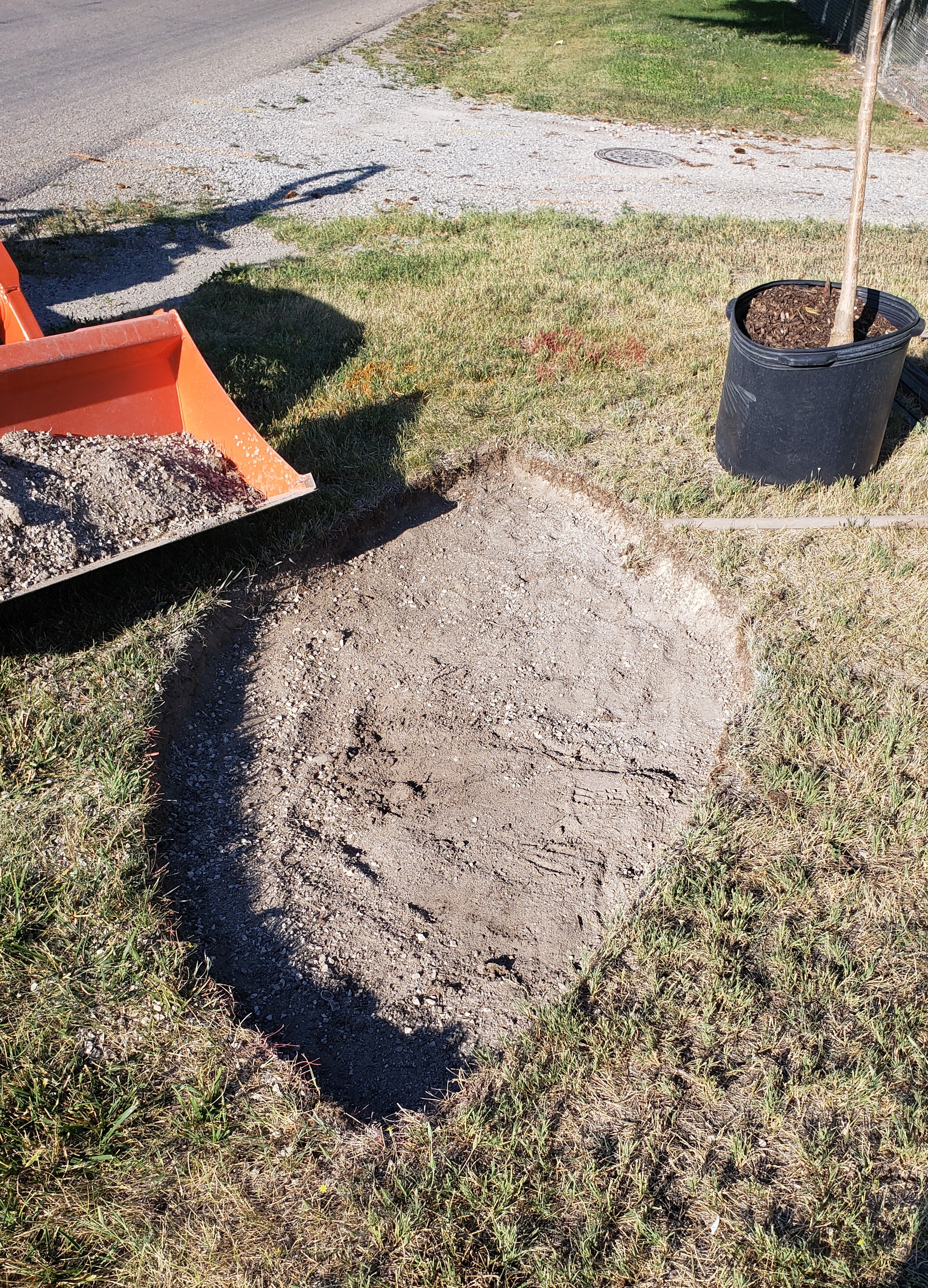Trees and Utility Line Planning & Planting, Part 7
 | Author:
Patrick Plantenberg, Tree Board Chair
Townsend Tree Board Chair, Townsend Rotary Club |
Trees and Utility Line Planning & Planting, Part 7 Patrick Plantenberg Tree Board Chair Note: This is the seventh in a series of articles to help prepare residents for any planned tree planting or pruning in their yards this coming year. The Townsend Tree Board is proud to provide this series of articles on tree planting and pruning considerations. A demonstration site on the northwest corner of D Street and South Walnut Street here in Townsend is being used.
In last week’s article, we learned: • Plant trees that grow in USDA Hardiness Zones 2-4. • Know the mature heights and widths of the trees. • Use your cell phone to check if the trees you see at the nursery or box store are right for this area and your yard before you buy. • All the work to remove the trees under the power line at our demonstration could have been avoided if the right trees had been selected in the first place!
This week we will learn how to prepare the sites for planting. The adage is don’t plant a $50 tree in a $5 hole! So be prepared to do a little extra digging to break up the compaction in the tree planting location. First, you need to mark your tree planting locations-and don’t forget to call for utility and water line locations!
The Townsend Tree Board recommends marking the planting site with spray paint with a minimum area of at least three feet around. You may have noticed a lot of the Tree Board trees are planted in eye-shaped holes (Picture 1).
When we started planting trees in the city parks, the city maintenance personnel complained that our round holes forced them to slow down while mowing to maneuver around the tree. A compromise was reached by making eye-shaped holes. This way the mower can simply curve slightly and not slow down to get around the tree. Typically, our eye-shaped holes are 3-4 feet wide and 6-10 feet long depending on the size of the yard and the ultimate size of the tree.
We spray paint the shape of the hole, and then use a reciprocating saw with a 4-inch blade to cut along the boundary of the hole. We use a tarp to place all the excavated sod and soil on. This makes clean up so much easier. Then we use a 12-inch blade to cut out the sod about 1-2 inches deep. Of course, this can be done with a shovel but not as effectively. The sod is thrown away or used to patch holes in the yard. Once the sod is removed from the tree hole, we dig the hole in the eye-shaped bed 3-4 inches deep. This 3-4 inch deep hole is for the mulch that will eventually be placed in the hole after tree planting. Then we dig the hole for the tree.
How wide do you make the hole? For a ball and burlapped tree, it should be twice as wide as the ball. For a container tree make the hole at least three times as wide as the container. This is because you want to remove and/or spread out any circling roots in the container before planting. Once the roots start to circle around the container the roots will continue to circle in your hole!
Circling roots must be removed or spread out at planting. For a bare-root tree make sure all the roots fit in the hole without circling.
How deep do you make the hole? Do not dig any deeper than the container or tree ball! You do not want the tree to settle in a hole that was dug too deep and not compacted again. It is better to plant too shallow than too deep! Shallow holes save a lot of work in the compacted soil around our homes.
Save all the native soil. Just remove any rocks over an inch in diameter. Do not import soil for the tree hole. You do not want to create a honey hole! You want your tree to send roots out into the native soil. Most tree roots are within the upper 6-18 inches of soil, and they extend way beyond the drip line of the tree. Trees need to spread tree roots beyond the tree hole, otherwise, trees can be susceptible to blowing over.
What about soil amendments in the tree hole? You will read many opinions about this. Generally, you do not want to amend the soil with anything. The Townsend Tree Board amends the soil slightly with three amendments: a little organic fertilizer, some elemental sulfur and/or an iron-rich additive, and some wood-based compost.
Organic fertilizer is slow-release and provides just a little something for the trees to get started. Do not use commercial inorganic fertilizers! We add elemental sulfur and/or an iron-rich amendment because our soil is very alkaline (i.e., has a high pH). As a result, many nutrients such as magnesium and iron are tied up in the soil and not readily available to the plant. That is why so many of the leaves on maples and other species turn yellow in our area.
Finally, we add a wood-based compost to aid in the development of a fungus-based microbiology community in the soil. Grass prefers a bacteria-based microbiological community. Trees need a fungus-based system.
Next week - let’s plant that tree!
Article Images
Click on Image Thumbnail(s) to view fullsize image
PhotoCredit: Pat Plantenberg
Image 1 Caption: Eye-shaped bed after sod-removal and excavation to 3-4 inches deep.
